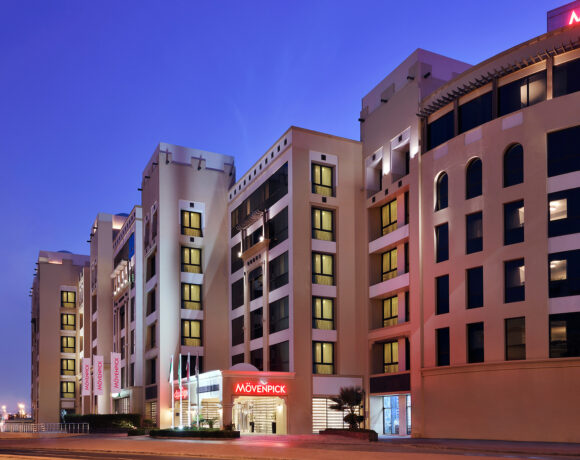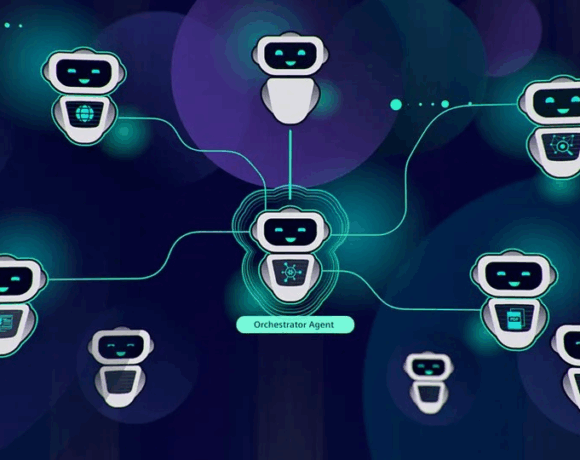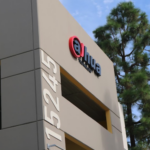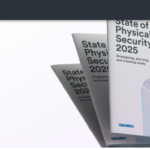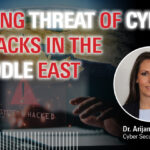Sustainability in All Fronts: From Mobile Access to Bamboo Cards

Mobile access control and sustainable cards provide future-proof flexibility for the never-ending endeavors of digital transformation and going green
By: Sam Cherif, Senior Director, Regional Business Head, MEA
The widespread adoption of smartphones has fundamentally altered how we interact with the world—from online banking to booking services or requesting rides. For most, mobile devices have become essential components of most people’s daily lives, not just for their features but also for the convenient benefits they provide.
It is no surprise that 2023 recorded 57% of the world’s population – just 4.6 billion people – to be using mobile internet, according to the latest “State of Mobile Internet Connectivity” report by GSMA Intelligence, a research and analysis firm specializing in the mobile industry.

Card should be made from rapidly renewable, FSC-certified materials like bamboo, minimizing its environmental impact compared to traditional PVC cards
There is no doubt mobile connectivity plays a big role in our daily lives, but the growing consensus that governments, organizations, and individuals must take immediate action to reduce their carbon footprint places it front and center as a means to replace traditional, environmentally unfriendly technologies.
In the security space, specifically in the access control segment, companies are increasingly executing access with mobile devices as a mechanism for the authentication and identity verification of their employees and visitors. Mobile access eliminates reliance on physical cards or badges, supports multiple security protocols, and adds layers of security on top of basic card encryption, making it substantially more secure than traditional physical access control.
Digital credentialing and passwordless multi-factor authentication, for example, have encouraged financial services companies to move from issuing plastic credit cards to digital payment methods. In the higher education sector, universities are taking a mobile-first approach in lieu of plastic cards by offering mobile IDs with the ability to open doors, check out library books, make cafeteria purchases, and more.
Much more than convenience
The benefits of mobile access control have been exposed on different occasions and in many scenarios, but its relationship with environmental sustainability and the optimization of resources for the planet deserves a particular space.
According to the 2024 State of Physical Access Control Report—produced by IFSEC Global in partnership with HID, a provider of trusted identity solutions—sustainability is playing a significant role in access control with nearly two thirds (63%) of respondents citing that those with responsibility for sustainability have either some influence or are fully consulted when it comes to upgrading physical access control systems.
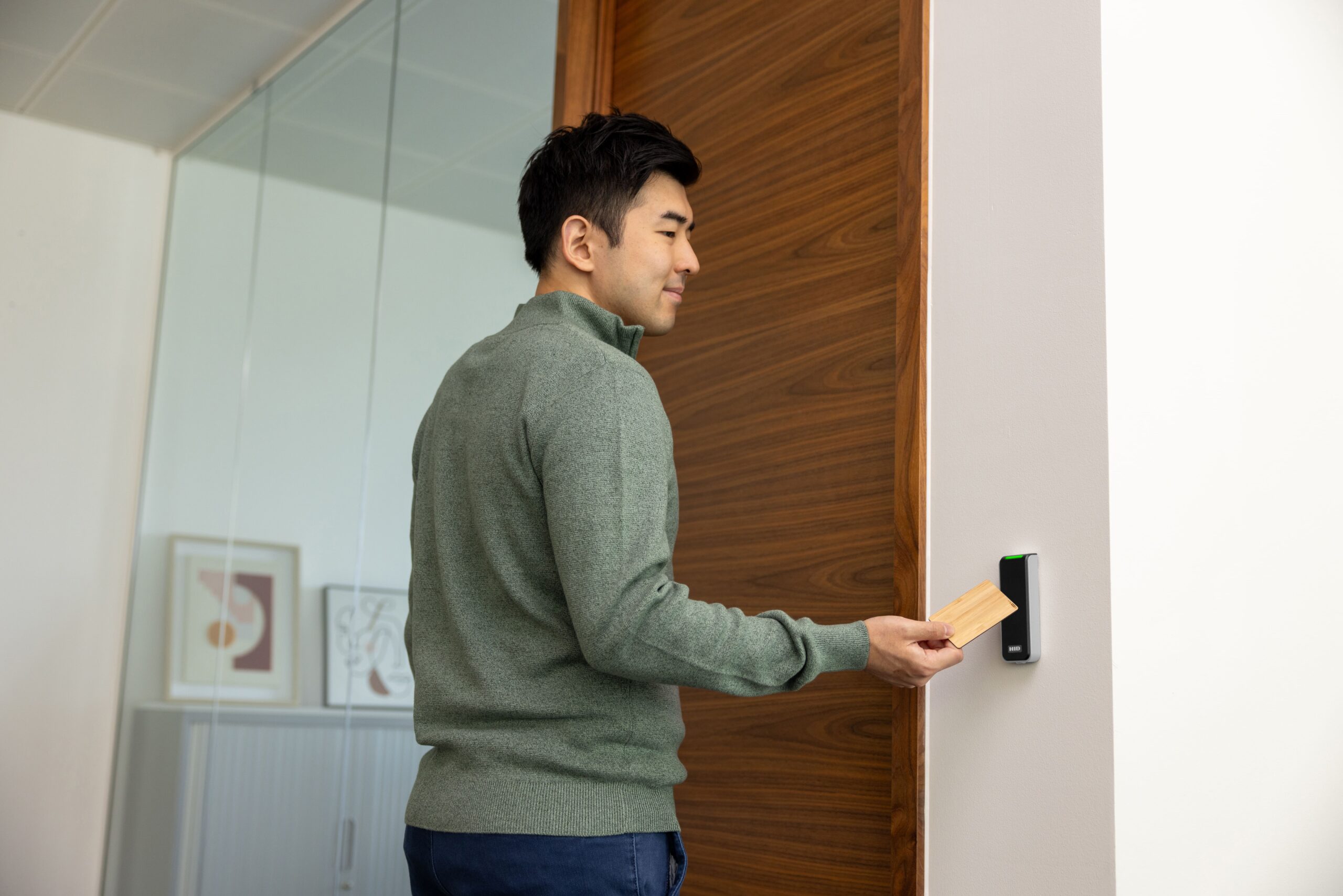
Card should be designed to work with existing Seos systems, making it scalable for organizations of all sizes
What does this mean for the security and identity industry?
Forward-thinking providers know that sustainability plays an important role in technology deployment decisions. Technology, such as 5G networks and Artificial Intelligence (AI), are already enabling more end-to-end, cloud-based solutions while reducing its carbon footprint.
Another element of mobile access that is gaining recognition is the concept of multi-application, where a single product or solution can execute multiple things. This digital experience not only increases operational efficiency but also helps reduce the number of plastic cards that users use and lose, which has a positive impact on sustainability and security. Mobile credentials are issued remotely over the air, which helps to reduce physical touchpoints both for employees and visitors.
Equally important, it provides a convenient, flexible, and secure access control. Advanced access control readers in the market today are ISO/IEC 27001 certified and support the latest security credentials, such as Seos, as well as digital credentials on cellphones, enabling smooth migration from less secure legacy card technologies. This flexibility enhances the user experience and helps organizations to drive their digital transformation sustainably.
Additionally, mobile access can be seamlessly integrated into Building Management System applications through a highly secure application programming interface (API) and software development kit (SDK). With robust API and SDK, organizations can collect, monitor, and manage terabytes of data.
A sustainable alternative to traditional cards
There are segments where the need for physical access cards is still required, particularly in the government and healthcare space. Although organizations are turning to renewable and eco-friendly materials as much as possible, in addition to reducing energy consumption and waste, there has been little effort by the market to implement this in finished physical access control cards.
To address this gap, leading manufacturers are introducing environmentally friendly access control credentials made from sustainable materials such as bamboo—without compromising on security. Utilizing Seos technology for the best in data protection, it is now possible to leverage modern cryptography and mutual authentication between the credential and reader to ensure reliable and secure access control.
Finally, it is important to note that organizations seeking green building certifications, including the internationally accepted Leadership in Energy and Environmental Design (LEED), should look for materials like bamboo which are appropriately certified such as the Forest Stewardship Council (FSC).
To amplify your organization’s sustainable practices, choose a sustainable and secure credential that prioritizes the design principles. The core principle here is sustainability. The card should be made from rapidly renewable, FSC-certified materials like bamboo, minimizing its environmental impact compared to traditional PVC cards. The next one is visual appeal. While not explicitly stated, the use of bamboo offers a natural and potentially more aesthetically pleasing alternative to standard PVC cards.
In terms of functionality and user-friendliness, you need to maintain the core functionality of traditional access control cards, such as mutual authentication and TÜViT Seal 5 certification, and look for cards that offer versatility for applications beyond physical access control. The user experience should be similar to traditional access control cards. However, the use of sustainable materials can enhance user perception for environmentally conscious users.
Finally, you have scalability. The card should be designed to work with existing Seos systems, making it scalable for organizations of all sizes. This ensures a smooth integration without needing entirely new infrastructure.
Conclusion
The digital experience reshapes security, with interconnected devices raising the bar of what can be secured and how. The cloud will power implementations efficiently across physical and logical footprints, elevating the value of data to drive specific business outcomes.
As consumers urge businesses to share information on things like energy use, waste reduction, and resource optimization, organizations must define a clear sustainability strategy to be better positioned to not only adapt to but anticipate environmental, social, and regulatory changes, both in the short- and long-term.
To succeed, systems integrators and end users should work with sustainably minded suppliers. Identifying and working with suppliers who demonstrate sustainability efforts in their organizations creates a sustainability component within the full value chain, helping to communicate sustainability KPIs and ROI.



